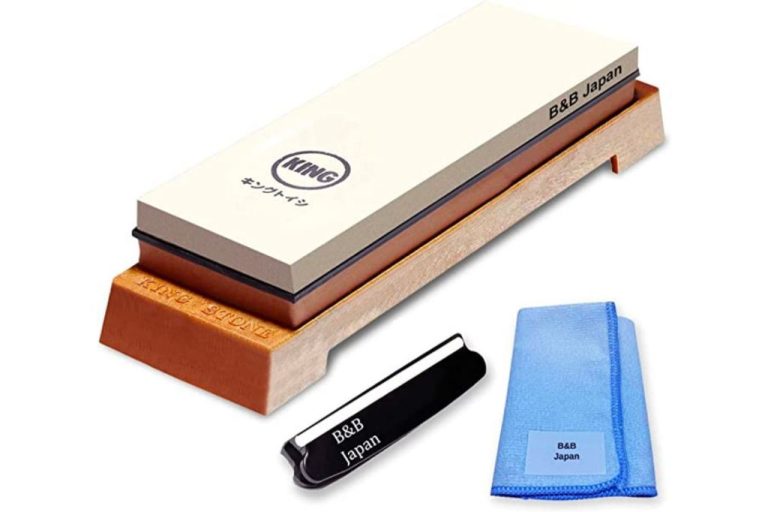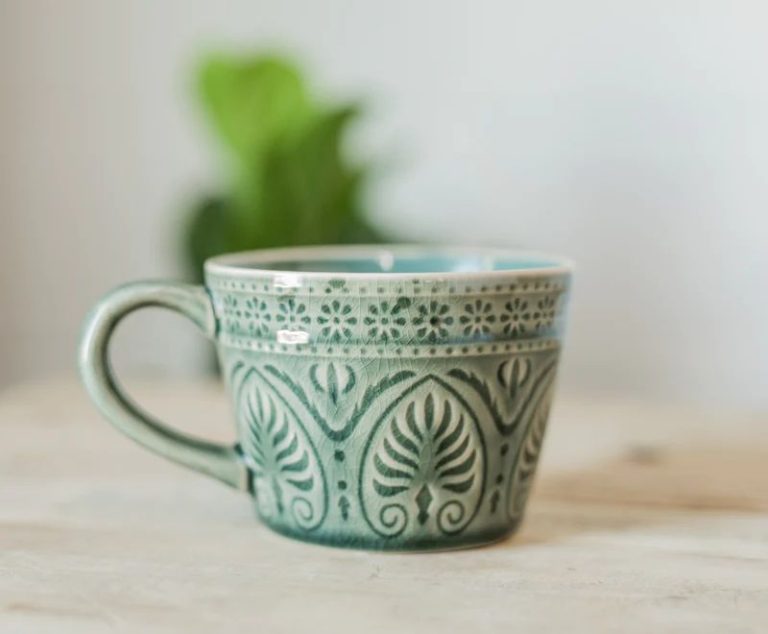What Art Is Pottery?
Pottery refers to any objects made from clay that have been hardened through firing in a kiln. Pottery has existed as an art form for thousands of years, with the earliest known pottery dating back over 20,000 years ago. As an art form, pottery encompasses a wide range of ceramic ware including functional pots and vessels as well as purely decorative sculptures and figurines.
Some of the major types of pottery considered art forms include earthenware, stoneware, porcelain, and terra cotta. Earthenware is fired at lower temperatures and tends to be more porous than other types. Stoneware involves higher firing temperatures resulting in a non-porous, durable material. Porcelain originated in China and involves the highest firing temperatures, resulting in a translucent, white ceramic. Terra cotta consists of red fired earthenware often used for pottery sculptures and architectural decorations.
Throughout history and across cultures, pottery has served as a canvas for creative artistic expression. From ancient Greek vessels depicting mythological scenes to contemporary ceramic sculptures, pottery allows artists to shape clay into limitless imaginative forms.
Clay Materials and Properties
Clay is the primary material used in pottery. The different types of clay have specific properties that make them suitable for creating various kinds of pottery.
The main types of clay used in pottery are earthenware, stoneware, porcelain, ball clay, and fire clay. Earthenware contains a lot of iron and magnesium, which allows it to be fired at lower temperatures to make terra-cotta style pottery. Stoneware contains few impurities, gives a stronger finished product, and can be fired at higher temperatures. Porcelain is the purest white clay and can be fired at very high temperatures to create delicate, translucent ceramics. Ball clays are used in mixing with other clays to provide plasticity. Fire clays withstand extremely high firing temperatures.
The plasticity of clay allows it to be molded, shaped, and formed into pottery pieces. When fired, the clay hardens into a permanent ceramic material. The porosity and refinement of the clay impacts the strength, durability, and water absorption qualities of the final pottery product. Clays can also be mixed together and combined with glazes or pigments to achieve desired textures, colors, finishes, and styles for artistic pottery creations.
Pottery Techniques
There are two main techniques for creating pottery: hand building and wheel throwing. Hand building involves shaping pots by hand using techniques like pinching, coiling, and slabbing. Wheel throwing involves shaping clay on a spinning pottery wheel.
Some common hand building techniques include:
Pinching
Pinching is one of the most basic hand building techniques and involves squeezing and pinching clay to form the desired shape1. Pinch pots are made starting with a ball of clay and pinching and twisting it into form. Features can be added by pinching, pulling, and creasing the clay.
Coil Building
Coil building involves rolling out and stacking coils of clay on top of each other to build up walls and shape a pot. The coils can be blended together with fingers or tools to bond them1. The technique allows flexibility in controlling the shape and creating textured surfaces on pots.
Slab Construction
Slab construction involves rolling out flat sheets or slabs of clay and joining them to construct forms. The slabs can be cut and shaped as needed before joining. Clay slurry or “slip” is used to seal and blend slab seams2. The technique allows for greater precision and control in shaping than pinch or coil building.
Wheel throwing involves mounting clay on a spinning pottery wheel and using hands and tools to shape it into pots. As the wheel spins, the potter can shape the clay by pressing into it with thumbs while supporting the walls from outside. The centrifugal force of the spinning wheel helps shape and thin the clay. Wheel throwing allows creating thinner-walled and more precisely shaped pots than with hand building.
Glazing and Firing
Glazing and firing are two essential steps in creating finished pottery. Glazes serve both decorative and functional purposes by providing an impervious and smooth surface to the porous clay body. The two main types of pottery glazes are underglazes and overglazes. Underglazes are applied to bisqueware, the first firing stage, and come in various colors that are revealed when a transparent overglaze is applied on top for the final firing. Overglazes can also be used alone and come in clear and colored varieties. Both underglazes and overglazes melt and fuse to the clay body when fired in a kiln, creating a glassy surface.[1]

Firing pottery is critical for hardening the clay and bonding the glazes to the clay body. Pottery is fired in kilns, which are essentially ovens designed to reach and maintain extremely high temperatures. There are various types of kilns used in pottery making, including electric, gas, wood-fired, raku, and pit kilns. Most kilns allow precise programming and control over the heating and cooling process. Temperatures can reach over 2,300°F during firing, causing glazes to melt and create glass. The firing process chemically transforms clay and glaze materials through vitrification. Proper firing is required for pottery to become hardened, watertight, and durable.[2]
[1] http://www.howtomakepottery.com/glazing_and_firing.html
[2] https://home.howstuffworks.com/green-living/pottery5.htm
Notable Pottery Styles
Pottery has been made for thousands of years in almost every culture around the world. Over time, distinct regional styles emerged based on the local clays available as well as cultural traditions and artistic preferences. Here is an overview of some of the major historical and regional pottery styles that have stood the test of time.
In Japan, several distinctive pottery styles developed over the centuries. Jomon pottery, from around 14,000 BCE to 300 BCE, features rope-patterned surfaces. Haji ware, from the 16th to 19th centuries, is known for its simple, rustic beauty with natural ash glazes. Kakiemon ware, originating in the 17th century, is distinguished by its fine white porcelain and colorful enamel decoration. Kutani ware, also from the 17th century, exhibits bold colors, intricate designs, and gold decoration on a dark background.https://matcha-tea.com/japan-pottery/5-japanese-ceramic-towns-you-should-visit
Ancient Greek pottery spanned centuries and underwent various stylistic changes. Geometric style pottery, from 900-700 BCE, features abstract geometric designs. Black-figure pottery, popular from 700-500 BCE, has black silhouetted figures on a red background. Red-figure pottery, arising around 530 BCE, reversed this with red figures on a black background. On these pots, figures from Greek mythology as well as everyday life were intricately depicted.https://www.amazon.com/Identity-Classical-Hellenistic-Northern-Peloponnese/dp/1784915068
Many other historical and regional pottery styles exist around the world, each with their own distinctive features, shapes, designs, materials, and decoration. Exploring the diversity of pottery styles provides a window into different cultures and their artistic expressions.
Contemporary Pottery Artists
Many modern artists continue to innovate and push the boundaries of pottery as an art form. Some notable contemporary potters include Edmund de Waal, known for his porcelain installations inspired by minimalism and architecture; Magdalene Odundo, who creates naturalistic forms drawing from African ceramics traditions; and Ron Nagle, acclaimed for his precisely shaped and meticulously glazed ceramic vessels.
Other influential contemporary ceramic artists are Coille Hooven, who brings pop art sensibilities to functional pottery; Brian Molanphy, known for organic, nature-inspired sculptural pieces; and Grayson Perry, who uses traditional techniques to create subversive conceptual works commenting on contemporary society. These artists demonstrate the rich possibilities of clay as a medium for artistic expression today.
Pottery as Artistic Expression
Pottery allows artists to convey their artistic vision in unique ways. The malleable nature of clay enables potters to sculpt functional objects like bowls, vases, and cups as well as decorative sculptures. Potters can shape clay into geometric forms or flowing organic shapes to reflect their creative impulses. The texture and colors of finished pottery pieces also contribute to their expressive qualities.
Glazes offer a wide palette for potters to apply color. Mixing metal oxides into glazes before firing can create vibrant hues from earthy browns and greens to brilliant blues and oranges. The glazing process allows artists to paint colors and patterns directly onto their pottery with creative freedom. Potters can use glazes to produce pottery ranging from minimalist pieces in a single hue to elaborate decorative works with intricate designs.
In addition to sculpting the form, potters can stamp or carve patterns and imagery into clay. This allows them to imprint their pottery with symbols and decorative motifs that have personal meaning and significance. The three-dimensional nature of pottery provides a unique canvas for showcasing artistic designs compared to traditional two-dimensional art forms. From elegant vases to elaborate tapestries carved into clay plaques, pottery allows for creative exploration through form, texture and adornment.
As an ancient yet evolving art medium, pottery enables continuous innovation and artistic expression. Modern potters combine traditional techniques with new technologies like 3D printing to find novel ways of working with clay. The enduring versatility and sculptural possibilities of pottery give artists an open-ended material to convey their inner vision.
Pottery in Art Galleries and Museums
Pottery has gained prominence as a fine art form and is well represented in major art institutions and museums. Some of the most extensive museum collections of ceramic art can be found at:
The Smithsonian American Art Museum, which houses over 3,000 pieces of American art pottery spanning from the early 19th century to the present day. Their collection includes major works by acclaimed ceramic artists such as George Ohr, Maria Martinez, and Eva Zeisel.
The American Museum of Ceramic Art in Pomona, California exclusively collects and exhibits ceramic art from across the United States. Their permanent collection includes over 5,000 objects illustrating the evolution of the American studio ceramics movement.
The Alfred Ceramic Art Museum at Alfred University has an encyclopedic collection of over 7,000 ceramic artifacts from ancient civilizations to contemporary works. They are considered one of the premier institutions collecting ceramic art worldwide.
The presence of pottery in these major art museums demonstrates its standing as a serious artistic medium appreciated for its aesthetic qualities. As ceramic arts continue to evolve, pottery is likely to maintain a prominent place in galleries and museum exhibitions.
Economic Impact of Pottery as an Art Form
Pottery plays an important economic role in many societies around the world. In some places, it provides a valuable source of income and livelihood for local artisans and their communities.
On a commercial scale, pottery operates like any other business or industry. There are costs associated with materials, labor, transportation, marketing, and other expenses required to run a profitable pottery operation. Some economic factors make large-scale production challenging, such as the labor-intensive and repetitive nature of throwing pots on a wheel.
The value of one-of-a-kind, handcrafted art pottery differs greatly from mass-produced ceramic ware. Unique pieces made by skilled artisans can fetch high prices at galleries, museums, auctions, and other venues. For example, in November 2006, a 13th century BC Chinese porcelain bowl known as the “Chicken Cup” sold at auction for over $27 million.
While not every art pottery piece reaches such astronomical values, there is a thriving collector market willing to pay large sums for rare and exquisite examples. Contemporary potters can find financial success selling their creations directly to collectors or through art dealers.
Overall, pottery continues to have economic importance around the world, both as an artistic pursuit and functional industry. The appreciation for fine craftsmanship ensures there will always be demand for skillfully produced and aesthetically pleasing pottery.
Future of Pottery as an Art Form
Pottery has evolved greatly as an art form over thousands of years, and innovators continue to push the boundaries of what’s possible with clay. Some key innovations shaping the future of pottery art include:
New techniques like 3D printing, which allows artists to design intricate shapes and textures rapidly. Digital processes open up new creative possibilities.
Use of new materials like paper clay that enable lighter, stronger forms. Composite clays with additives create distinctive visual and tactile effects.
Artists embracing multimedia approaches, incorporating LEDs, video projections, and augmented reality into their pottery artworks.
More crossover between pottery, design, and technology, evidenced by things like Google’s Ceramics Project using AI to generate novel 3D ceramic forms.
As pottery continues to fuse with cutting-edge innovations, we can expect to see profound new expressions emerge. Pottery seems poised to transcend its foundations as a traditional craft and be recognized as a deeply creative, highly adaptable art form open to ongoing experimentation and visionary new shapes.




